







Guatemala is often called “El País de la Eterna Primavera,” which translates to “the land of eternal spring,” because of its spring-like weather year-round. But it’s not just the climate that makes this country special; it’s the people. Guatemalans are naturally charismatic, turning even a quick coffee purchase into a memorable conversation. Their storytelling is so intriguing that you’ll find yourself completely drawn to their stories.
We hosted our first Climate Leaders Fellowship seminar in Guatemala in 2024. It started in Guatemala City, where we enjoyed Guatemalan cuisine and the renowned hospitality that made Guatemala famous. Then we headed to Lake Atitlan, the deepest lake in Central America. Join our program next time on our mission to make conservation international.
| Key Facts About Guatemala | Details |
| Population | 18,687,881 |
| Official Language | Spanish |
| Currency |
Guatemalan Quetzal
|
| Capital |
Guatemala City
|
| Main Religion | Christianity |
| Location | Central America |
Want to know more interesting facts about this megadiverse country? Let’s explore Guatemala!
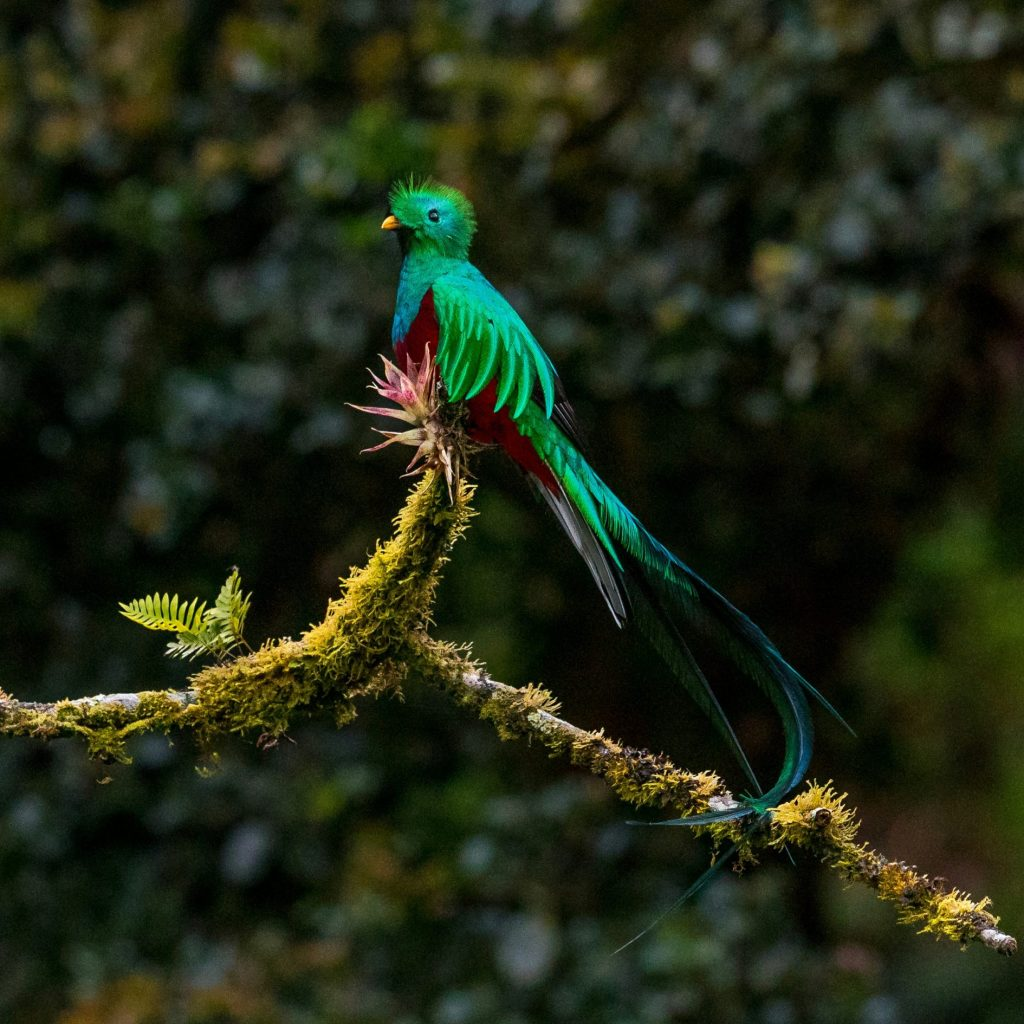
The quetzal is Guatemala’s national bird, prominently featured on the country’s flag and giving its name to the Guatemalan currency. These golden-green birds symbolize freedom, as it is believed they would rather die of starvation than live in captivity.
The quetzal has been revered since ancient times. Both the Mayan and Aztec civilizations considered the bird sacred, seeing it as a symbol of beauty and freedom. Today, the quetzal remains a powerful emblem of Guatemala, reflecting the country’s natural beauty and cultural heritage.
Bright colors dominate Guatemala, especially in the traditional textiles worn by indigenous Maya communities. There are over 800 styles of indigenous clothing, each unique to different villages and Guatemalan families. Patterns in these textiles symbolize various aspects of Guatemalan life.
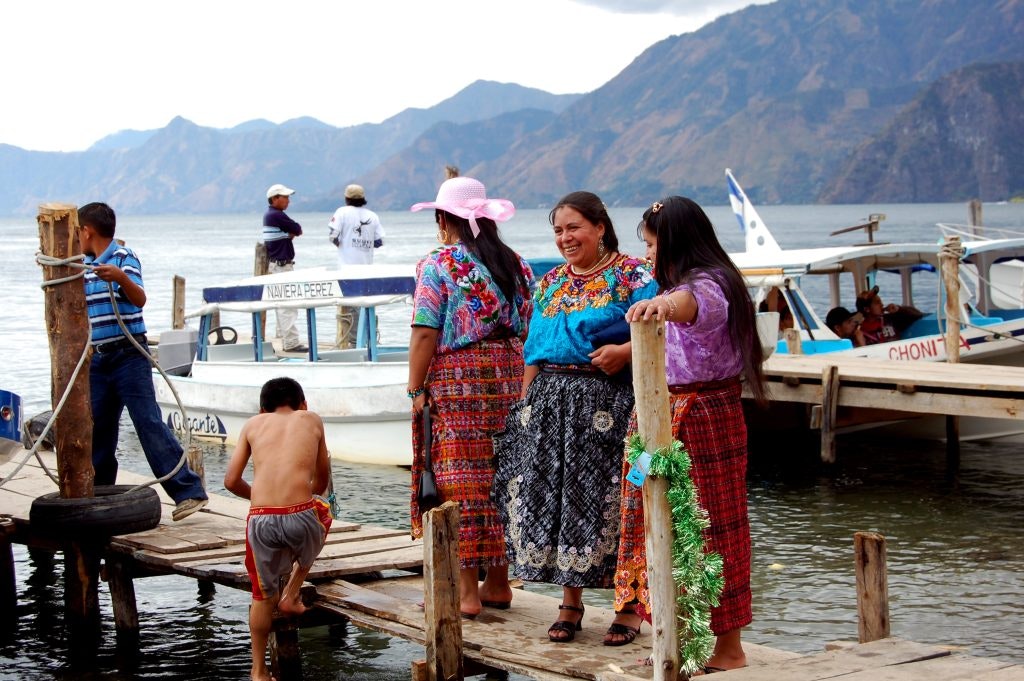
Women in traditional clothing in Guatemala stand next to a lake.
For instance, zigzags represent volcanoes or mountains, flowers symbolize fertility or new life, diamonds stand for the four corners of the universe, and the quetzal represents goodness and light. Patterns can indicate the wearer’s village, while the size or color of a woman’s faja (belt or sash) can communicate her marital status.
We have a lot of rich history to thank the Maya civilization for, including the creation of chocolate. The Maya considered cacao a divine gift and used cacao beans to make a drink, often mixed with chili peppers, honey, or water. This made the drink more bitter and spicy compared to the sweet chocolate we consume today.
The first ever chocolate bar came much later. Today, Guatemalans continue to celebrate the incredible nutritional benefits of cocoa, using it in various traditional recipes and modern products.
This country boasts some impressive Maya ruins, some of which are located in Tikal National Park, a UNESCO World Heritage Site in northern Guatemala. It is one of the major sites of Maya civilization and was inhabited from the 6th century BC to the 10th century AD. While the site was long known to locals, European records suggest it may have been first documented as early as 1696.
What can be seen of Maya architecture in this complex is truly spectacular and it features a range of cultural and natural wonders. Surrounded by jungle, the site includes temples and palaces, and in many trees in the surrounding countryside visitors can also see the remnants of dwellings. This national park is one of the few mixed UNESCO World Heritage Sites that is listed for both its natural and cultural assets.
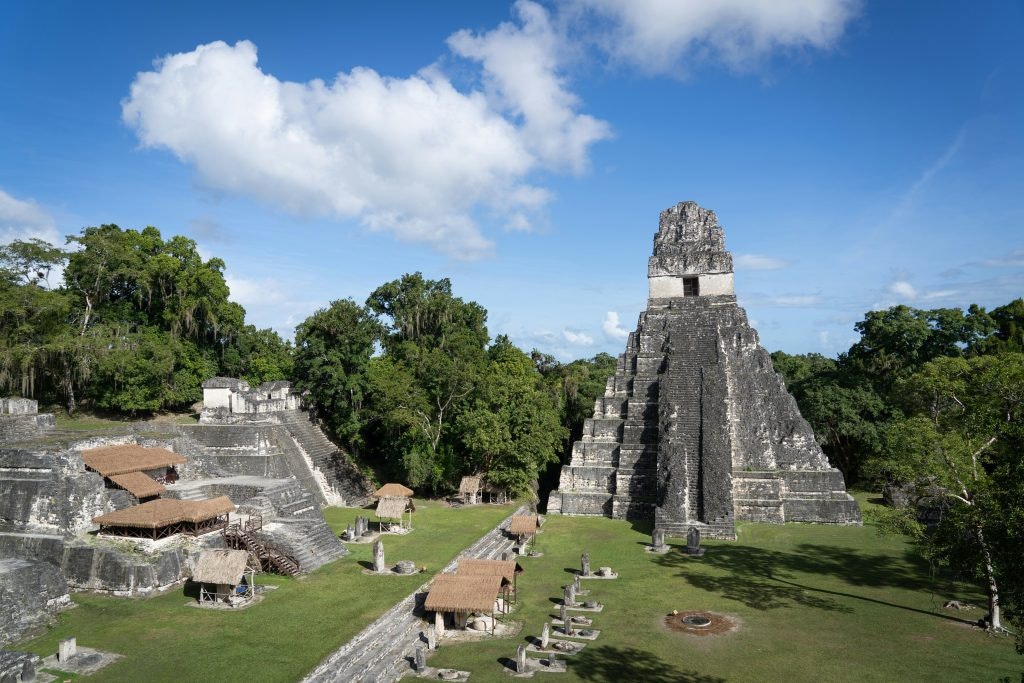
These are just some of the Maya ruins you can see in Tikal National Park.
Not just a site for tourists, Tikal has also been used as a filming location. The Maya temple complex and its lush rainforest were featured in Star Wars: Episode IV – A New Hope (1977). The park itself is home to 200 tree species and 300 species of bird.
These buses, known locally as “chicken buses,” undergo a dramatic transformation once they arrive. Serving as intercity transportation, they are adorned with vibrant, elaborate designs, often featuring additional accessories and LED lights, giving them a unique charm.
The process includes mechanical upgrades to ensure they can handle the mountainous terrain, and the exteriors are painted with intricate, colorful patterns. Each bus becomes a moving piece of art, reflecting the creativity and culture of its community. These buses are not just a means of transport; they are a vital part of daily life, connecting towns and cities.
On All Saints’ Day Kite Festival, people of Guatemala’s Sacatepéquez department fly giant circular kites above family members’ gravesites to pay their respects. Children fly smaller kites, while adults bring kites that can reach up to 60 feet in diameter. These paper kites, featuring kaleidoscopic patterns and delicate motifs, add a dreamlike quality to the landscape.
The festival attracted 90,000 participants to the town of Sumpango in 2019, more than double its population of 38,000 at the time. This event highlights the community’s dedication to honoring their ancestors in a visually stunning and culturally significant way.
The official language in Guatemala is Spanish, but that’s not where it ends. Guatemala Spanish has over twenty dialects and another 25 languages are spoken in the country, with 22 of them Mayan languages and the remaining two being indigenous languages – Garifuna and Xinca.
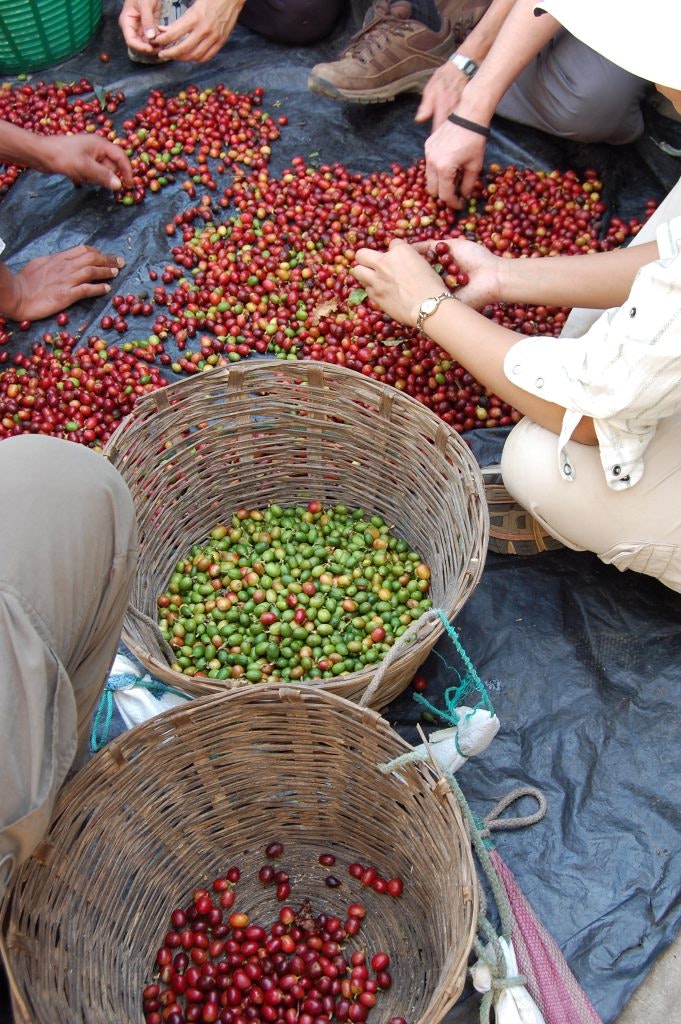
Rustic Pathways tour participants sort coffee cherries in Guatemala.
Okay, it’s not so surprising that Guatemala produces coffee. But Guatemalan produced coffee is renowned for its quality beans due to its ideal climate and rich volcanic soil, particularly in regions like Antigua, Huehuetenango, and Atitlán.
Coffee was introduced to Guatemala by Jesuit missionaries in the 18th century. Today, it’s a major export, accounting for about 40% of the country’s agricultural export income.
Guatemala’s coffee culture is deeply ingrained, with local traditions and festivals celebrating the harvest. Coffee plantations often offer tours, providing insight into the process from bean to cup, making it a significant part of both the economy and cultural identity.
Guatemala is a mountainous country, with 37 volcanoes, including three that are still active: Pacaya, Fuego, and Santiaguito. The Sierra Madre Mountain range crosses the country, connecting Guatemala with Mexico, Honduras, and El Salvador.
Nature lovers and wildlife enthusiasts will find plenty to explore in Guatemala. The varied topography includes beaches, highlands, and wetlands, seven of which are on Ramsar’s List of Wetlands of International Importance. There are plenty of good reasons for animal and wildlife lovers to visit the Pacific Ocean coastline of Guatemala as the country is home to 192 native species of mammals and 486 species of birds, making it a biodiversity hotspot.
The country borders Mexico to the north and west, Belize to the northeast, Honduras to the east and El Salvador to the southeast, sharing its longest border with Mexico.
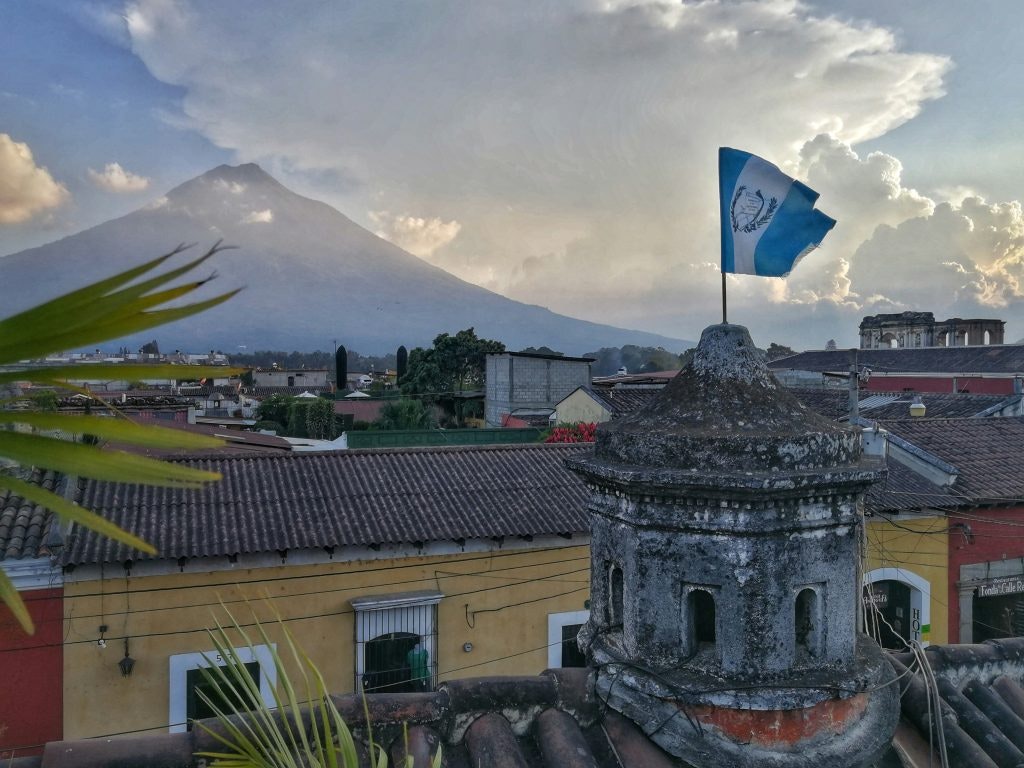
Guatemala’s city of Antigua, offering a view of a volcano and the nation’s flag.
Guatemala’s Caribbean Sea coastline on the western Atlantic Ocean extends 151 km (94 miles) along the Bay of Amatique and the Gulf of Honduras, featuring stunning beaches like Playa Blanca in Izabal.
Maximón, a fascinating figure with roots in both indigenous Maya and Spanish Catholic traditions, is gifted liquor, cigars, and money in exchange for blessings. Represented as a wooden statue, he resides in Santiago Atitlán, where a different family hosts him each year.
Caretakers ensure Maximón’s supply of liquor and light his cigarettes or cigars, sitting with the effigy as visitors come to ask for favors. Reflecting his dual nature, it is believed that Maximón may grant wishes even if they are less than pure.
Civil war raged in Guatemala from 1960 to 1996. Historians estimate that 200,000 people were killed during the 36-year conflict between the Guatemalan government and leftist rebel groups
The Guatemalan Civil War stemmed from issues of unfair land distribution. Wealthy Guatemalans, mainly European-descended, and foreign companies like the American United Fruit Company controlled much of the land and paid almost no taxes, leading to conflicts with the rural indigenous poor who worked the land under harsh conditions. It’s sad and unfortunately common that a country rich in people and resources struggles with issues of inequality and repression in society.
| Year/Event | Description |
|---|---|
| 1944-1951 | Democratic elections during the Guatemalan Revolution brought popular leftist governments to power. |
| 1954 | A U.S.-backed coup installed the military regime of Carlos Castillo Armas to prevent leftist reforms. |
| November 13, 1960 | Civil War began when left-wing junior military officers led a failed revolt against General Ydigoras Fuentes. |
| Post-1960 | Surviving officers formed the rebel movement MR-13. |
| 1970 | Colonel Carlos Manuel Arana Osorio became the first of several military dictators from the PID. |
| 1970-1982 | The PID dominated politics through electoral fraud, favoring military dictators. |
| March 23, 1982 | General Efraín Ríos Montt seized power in a military coup. |
| 1970s | Social discontent grew among indigenous people and peasants, leading to the formation of insurgent groups. |
| 1996 | The Guatemalan Civil War ended with the signing of peace accords on December 29, 1996, between the government and the URNG. |
💡 Want more trivia?
Browse all Fun Facts articles.